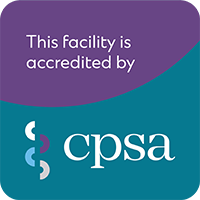What is Platelet Rich Plasma Treatment (PRP)?
Platelet-rich plasma therapy, sometimes called PRP treatment, attempts to take advantage of the blood’s natural healing properties to repair damaged cartilage, tendons, ligaments, muscles, or even bone.
The goals are to:
- Reduce pain
- Increase range of motion
- Improve function
Platelet-rich plasma refers to a sample of serum (blood) plasma that has two to five times more than the normal number of platelets. This treatment enhances the body’s natural ability to heal itself and is used to improve healing and shorten recovery time from acute and chronic soft tissue injuries.
Although blood is mainly a liquid (called plasma), it also contains small solid components (red cells, white cells, and platelets.) The platelets are best known for their importance in clotting blood. However, platelets also contain hundreds of proteins called growth factors which are very important in the healing of injuries.
The most common way to prepare Platelet-Rich Plasma involves centrifuging a patient’s blood sample. A vial of blood is placed in a centrifuge, where it is spun at intensely high speeds. The spinning causes the blood to separate into layers, including platelet-rich plasma, that is then separated for use.
What Does Platelet-Rich Plasma Therapy Do?
Platelets are part of the blood that circulates around the body ready to help with blood clotting should you have a cut, broken bone, injury that bleeds internally, or any other type of injury. Besides containing clotting factors, the platelets release growth factors that help start the healing sequence. With a concentrated number of platelets, larger quantities of these growth factors are released to stimulate a natural healing response.
Who Is a Candidate for Platelet-Rich Plasma Therapy?
While there is no universally adopted list of criteria describing who is eligible for Platelet-Rich Plasma Therapy, in general patients who fail conservative treatment including education, activity modification, physiotherapy, chiropractic, bracing, medications, cortisone injections, joint aspiration, etc.
Platelet-Rich Plasma Therapy is not typically recommended for the most severe cases of osteoarthritis or ruptured tendons or ligaments.
Choosing a Platelet-Rich Plasma Therapy Doctor
When selecting a physician for platelet-rich plasma therapy, patients may want to ask:
- How does the doctor diagnose and assess the problem? A diagnosis should be verified with imaging technology, such as an x-ray, ultrasound or MRI, any time surgery or injections are being considered. In addition to a specific diagnosis, the doctor should assess whether or not the condition is too severe to be treated with Platelet-Rich Plasma Therapy.
- What training does the doctor have to perform Platelet-Rich Plasma Therapy? The International Cellular Medicine Society recommends that a doctor offering Platelet-Rich Plasma Therapy has extensive training.
- Does the doctor use ultrasound, fluoroscopy, or computed tomography (CT scan) to guide injections? Image-guided injections have been demonstrated to be safer, more accurate, and more effective than blind injections.
- What are the doctor’s experience and success rate for treating various conditions with PRP injections? PRP injections are used to treat a number of different joint conditions, and patients may want to confirm that the physician is familiar with using Platelet-Rich Plasma Therapy specifically for treating osteoarthritis.
What is the cost of Platelet-Rich Plasma Therapy?
Platelet-rich plasma therapy is considered “experimental” by most insurance companies. A single treatment of one joint can cost $400 to $2,000, paid out-of-pocket by the patient. If more than one joint is treated, the cost increases but typically does not double.
At Body Restoration, the cost for platelet-rich plasma therapy is $995.
What are the side effects of Platelet Rich Plasma Therapy?
This procedure is still considered “experimental”. There have been very few reports of complications or adverse reactions. Whenever an injection of any kind is given, there is always the risk of infection. PRP has a strong antibacterial effect so the risk of local infection is minimal. Some patients have reported increased pain, redness, and swelling at the injection site but this response didn’t last long. We will offer you a pain medication to help with this. Also, possible but uncommon are allergic reactions to the lidocaine used as a numbing agent.
The worst that might happen with this treatment is that you won’t get any better or more rarely, the needle might go through a blood vessel or nerve causing bleeding or nerve damage.
Since your own blood is used, there is no risk for transmitted blood-infections. There’s little concern about reactions to the blood, transfer of infection or HIV, or getting cancer cells through someone else’s blood because you donate your own blood to use in the procedure.
What is the Body Restoration Advantage?
Dr. Rambaransingh has been performing Platelet-Rich Plasma Therapy for seven years and has been collecting data along the way. He has performed over 1000 cases throughout the years. Body Restoration has developed a program that includes a no obligation initial consultation to confirm an accurate diagnosis, cutting-edge technology to ensure the optimal type of PRP is made and is also delivered to the target site accurately, and a customized rehabilitation program to maximize the healing process afterwards.
Take Away Points
Platelet-Rich Plasma Therapy is a novel and emerging treatment for musculoskeletal injuries and conditions. Research continues to be done to better understand its effectiveness. Here in Edmonton, Platelet-Rich Plasma Therapy has been a successful treatment for selected cases that do not respond to standard or conventional treatment. Please contact us to see if this is the right treatment for you.



